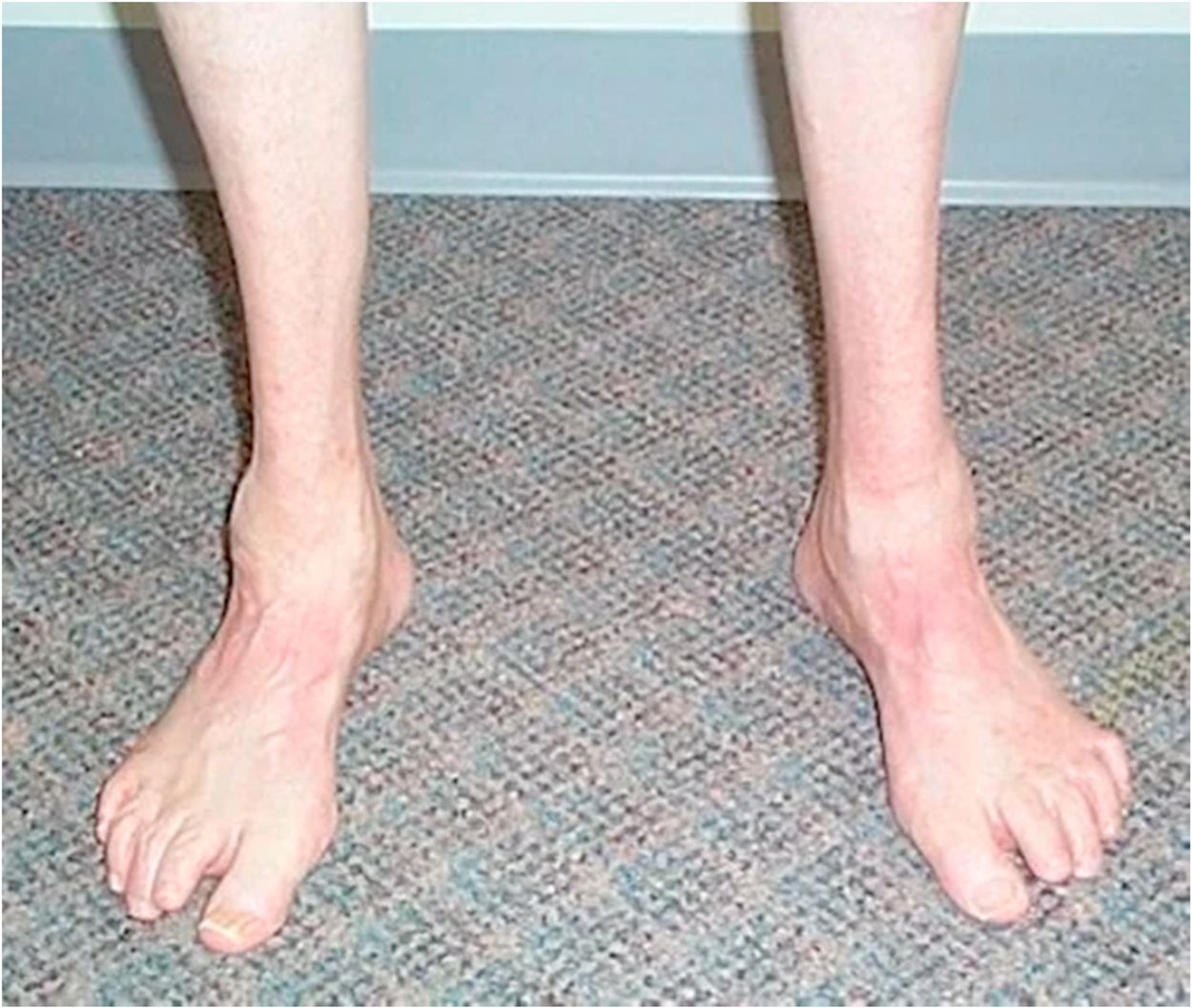
Contractures of feet, muscle atrophy, and oculomotor apraxia might sound like complex medical terms, but understanding them can be simpler than you think. Contractures of feet refer to the permanent tightening of muscles, tendons, skin, and nearby tissues that cause the joints to shorten and become very stiff. Muscle atrophy is the wasting or loss of muscle tissue, often due to lack of use or disease. Oculomotor apraxia is a condition where the eyes have difficulty moving smoothly, making it hard to track objects. These conditions can impact daily life, but knowing the facts can help manage and treat them effectively. Let's dive into 25 essential facts about these conditions to better understand their causes, symptoms, and treatments.
Key Takeaways:
- Contractures of the feet, muscle atrophy, and oculomotor apraxia can cause pain and movement difficulties. Physical therapy, surgery, and assistive devices can help manage symptoms and improve quality of life.
- Understanding these conditions and seeking early intervention, support, and adaptive technologies can empower patients and families to live well despite the challenges. Ongoing research brings hope for better treatments.
Understanding Contractures of Feet
Contractures of the feet occur when muscles, tendons, or other tissues tighten, causing deformity and restricting movement. This condition can be painful and impact daily activities.
-
Contractures can result from prolonged immobility. When muscles and joints remain in one position for too long, they can stiffen and shorten.
-
Common in conditions like cerebral palsy. Many individuals with cerebral palsy experience contractures due to muscle imbalances and spasticity.
-
Physical therapy can help manage symptoms. Regular stretching and strengthening exercises can improve flexibility and reduce discomfort.
-
Surgery may be necessary in severe cases. Procedures like tendon release or lengthening can correct deformities and restore function.
-
Orthotic devices provide support. Braces and splints can help maintain proper foot alignment and prevent further contractures.
Exploring Muscle Atrophy
Muscle atrophy refers to the wasting away or loss of muscle tissue. It can result from various factors, including lack of use, disease, or injury.
-
Disuse atrophy is common after prolonged bed rest. Muscles weaken and shrink when not regularly used.
-
Neurological conditions can cause atrophy. Diseases like amyotrophic lateral sclerosis (ALS) and multiple sclerosis (MS) affect nerve signals to muscles, leading to atrophy.
-
Aging contributes to muscle loss. Sarcopenia, the age-related decline in muscle mass, affects many older adults.
-
Proper nutrition is crucial for muscle health. Adequate protein intake supports muscle maintenance and growth.
-
Resistance training combats atrophy. Strength exercises stimulate muscle fibers, promoting growth and preventing wasting.
Delving into Oculomotor Apraxia
Oculomotor apraxia is a rare condition affecting eye movement control. Individuals with this disorder struggle to move their eyes voluntarily.
-
Often diagnosed in childhood. Symptoms typically appear in early childhood, with parents noticing unusual eye movements.
-
Genetic factors play a role. Mutations in specific genes can lead to oculomotor apraxia, making it a hereditary condition.
-
Affects coordination and balance. Difficulty with eye movements can impact overall motor skills and coordination.
-
Speech and language development may be delayed. Children with oculomotor apraxia often experience delays in speech due to associated motor planning issues.
-
Therapies can improve symptoms. Occupational and physical therapy help develop alternative strategies for eye movement and coordination.
The Interplay Between These Conditions
Contractures of the feet, muscle atrophy, and oculomotor apraxia can sometimes coexist, complicating diagnosis and treatment.
-
Neuromuscular diseases often involve multiple symptoms. Conditions like muscular dystrophy can cause contractures, atrophy, and oculomotor issues simultaneously.
-
Comprehensive care is essential. Multidisciplinary teams, including neurologists, physical therapists, and orthopedists, provide holistic treatment plans.
-
Early intervention improves outcomes. Prompt diagnosis and treatment can slow progression and enhance quality of life.
-
Assistive devices enhance mobility. Wheelchairs, walkers, and other aids support movement and independence.
-
Regular monitoring is crucial. Ongoing assessments help adjust treatment plans and address new symptoms.
Living with These Conditions
Managing contractures, muscle atrophy, and oculomotor apraxia requires a proactive approach and support from healthcare professionals.
-
Education empowers patients and families. Understanding the conditions and available treatments helps make informed decisions.
-
Support groups offer emotional aid. Connecting with others facing similar challenges provides comfort and practical advice.
-
Adaptive technologies improve daily life. Tools like speech-to-text software and modified utensils enhance independence.
-
Mental health support is vital. Coping with chronic conditions can be stressful, making psychological support important.
-
Advancements in research bring hope. Ongoing studies aim to develop new treatments and improve existing therapies.
Final Thoughts on Contractures, Muscle Atrophy, and Oculomotor Apraxia
Understanding contractures of feet, muscle atrophy, and oculomotor apraxia can make a big difference in managing these conditions. Contractures can limit movement, while muscle atrophy weakens muscles, and oculomotor apraxia affects eye movement. Knowing the symptoms and treatments helps in early detection and better care. Physical therapy, medications, and sometimes surgery can improve quality of life. Staying informed and proactive is key. Always consult healthcare professionals for personalized advice. These conditions might seem daunting, but with the right approach, they can be managed effectively. Stay curious, stay informed, and take charge of your health.
Frequently Asked Questions
Was this page helpful?
Our commitment to delivering trustworthy and engaging content is at the heart of what we do. Each fact on our site is contributed by real users like you, bringing a wealth of diverse insights and information. To ensure the highest standards of accuracy and reliability, our dedicated editors meticulously review each submission. This process guarantees that the facts we share are not only fascinating but also credible. Trust in our commitment to quality and authenticity as you explore and learn with us.
